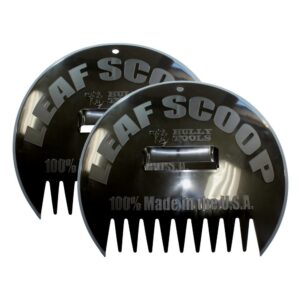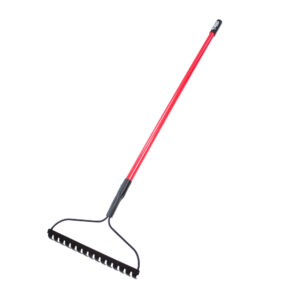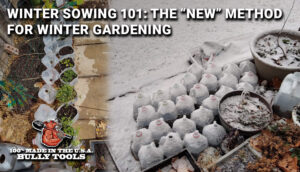Seasonal Garden Cleanup: Fall vs Spring

Garden cleanup can be a satisfying process when the final product is a tidy environment that will be ready when plants burst out with spring greenery. It’s easy to want to clean up all those dying leaves, stems, and spent flowers—they can sure be unsightly. At the same time, it can be overwhelming, especially if you’re new to gardening or have moved into a house with an established yard. There are so many questions. How hard should a plant be cut back? How can you give plants the best environment to survive winter temperatures? How do you not get overwhelmed with the volume of work to do?
Certainly these are important questions, but first we need to answer the biggest questions: When should I prune and clean up the garden? In the fall as plants die back and look bad, or in the spring as they begin to leaf out? Perhaps answering these questions first could help the others answer themselves.
The short answer to when to perform seasonal garden cleanup is: Whenever suits you best. The long answer is more complicated because it takes many factors into consideration.
It’s typical for gardeners who prefer a well-kept garden to do their cleanup in the fall. This is the garden where everything is pruned to the ground, ornamental grass stubs are straight and tidy, all fallen or dying leaves are raked and added to the compost pile. Roses are cut short, with bare canes, and wrapped up in burlap. All tidy and almost sterile.
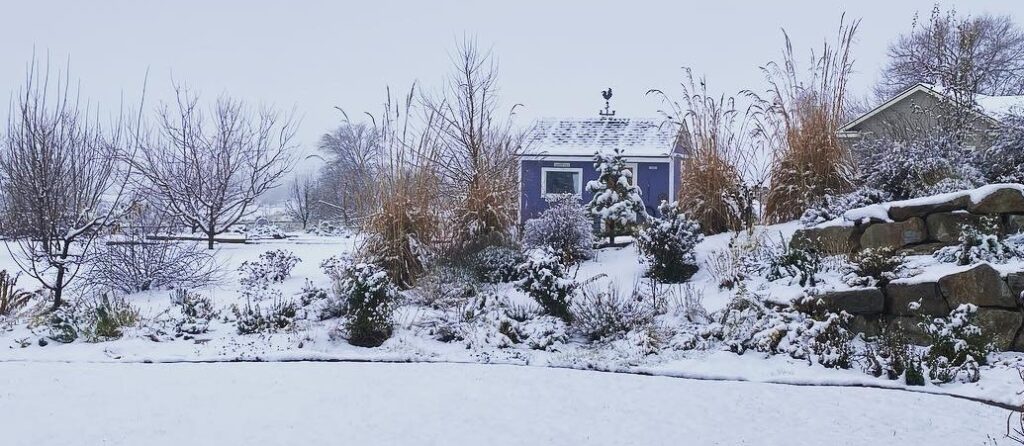
Leaving untrimmed perennials over winter vs the same bed the following spring after cleanup.

But what if that isn’t the only way to approach garden cleanup? What if, in fact, there was a better way?
Plants That Should Be Cleaned Up in the Fall
While fall cleanup is optional in most North American growing zones, there are instances where some leaf matter should be cleaned up as temperatures drop:
- Anything with disease or infestation—If a plant has suffered from powdery mildew, fungus, or is insect infested (such as with spider mites), all affected stems should be pruned and all leaves should go in the trash. For example, this may be the case with some plants such as powdery mildew on bee balm, fungus on peonies, or spider mites on dahlias. Make sure to sterilize cutting tools between plants to prevent spread.
- Anything that attracts pests over the winter—If there are plants that are in an area where they are constantly wet and the leaves decompose a long time in a wet state, they will attracts pests such as snails or slugs. This is often true for perennials such as hostas. Remove leaves to save you from problems come spring.
- Anything you don’t want re-seeding—Some plants such as coneflower, pampas grass, snapdragon, and others will re-seed themselves if you do not remove the flowers before they go to seed. Of course, most of these will be eaten by overwintering birds, but anything that may survive will add to your flowerbed. If you want to avoid naturalizing your garden, remove spent flowers.
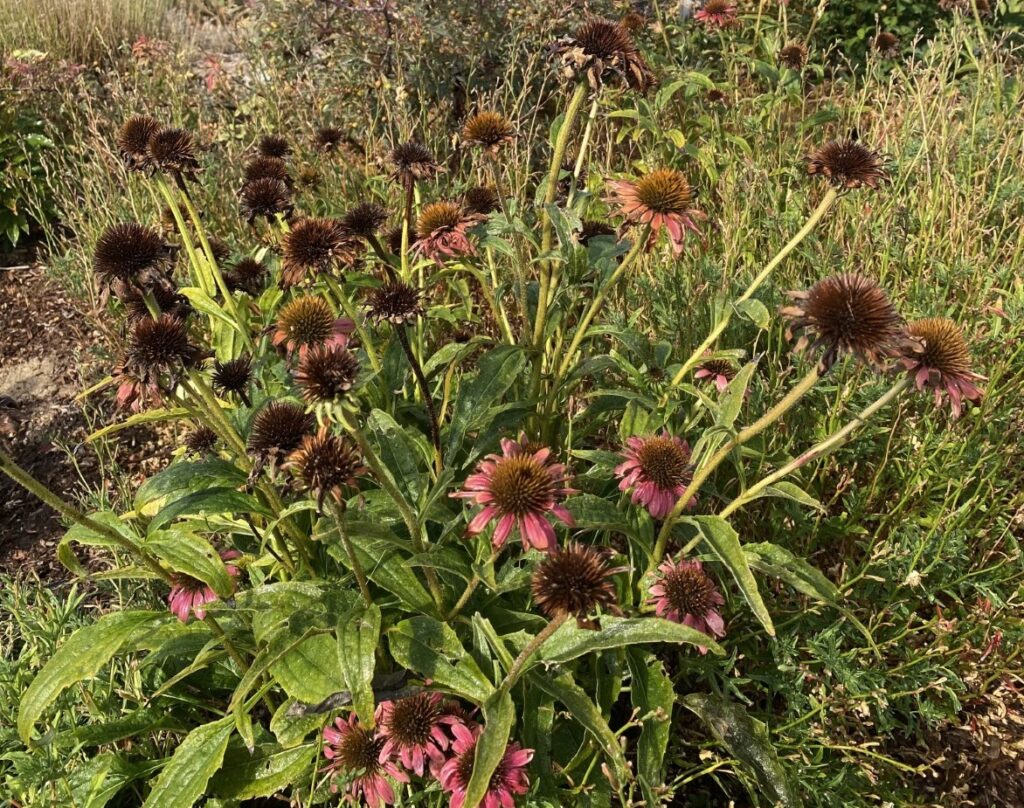
Of course, whether or not these problems persist in your garden depends on your climate and your garden’s particular ecosystem, so adjust cleanup needs accordingly.
The Benefits of Spring Cleanup
While many gardeners believe that fall cleanup is the only way to go, there are actually several benefits to leaving a majority of cleanup for the spring. Since many animals and insects are adapted to use plants for winter survival, it makes for a healthier garden to keep their needs in mind.
- Protects beneficial insects—While it’s true there are insects you don’t want to overwinter, there are plenty you do. Insects like ladybugs hibernate over winter and rely on dead plant matter for nesting, where it’s moist, safe from wind, and sheltered from snow. If that leaf matter is completely cleaned up in the fall then they have fewer options. This is true for many other beneficial insects such as solitary bees, dragonflies, ground beetles, lacewings, soldier beetles, spined soldier bugs, and even swallowtail butterflies. Not only hibernating insects, but egg masses of praying mantis and spider will overwinter in your yard, and they’re known to protect your garden from destructive pests.

- Provides birds protection and food—Not all birds migrate. These overwintering birds rely on foraging what’s available. If you cut everything down prematurely they won’t have access to the seeds from perennials such as black-eyed susan, coneflower, and goldenrod that can sustain them during winter months. Leaving large grasses and shrubs also protects overwintering birds from potential predators.
- Shelters frogs, salamanders, and toads—Amphibians help control pests in the garden, and since they’re carnivores they won’t eat your plants; they eat beetles, caterpillars, grasshoppers, slugs, flies, and months. Compost heaps and leaf piles are an amphibian’s ideal overwintering habitat for hibernation. They also like piles of wood and rocks, and ponds because they are a source of food and protection from predators.
- Protects plants from winter damage—Some more tender perennials overwinter cold temperatures with better success when the crown is protected by foliage. This is true for such perennials as aster, astilbe, chrysanthemums, heuchera, lavender, and Russian sage. If you’re having trouble keeping these plants alive over harsh winters, consider waiting to cut them back in the spring. Also, don’t forget that here are some flowers like hellebores that bloom in late winter so cutting down foliage in the fall will damage growth.
- Plants in winter can be beautiful too—While a tidy yard is its own special visual delight, there is beauty throughout a plant’s lifecycle. There is beauty in plants that feed birds, even when the black sticks of echinacea aren’t as attractive as its blooming stage. There are many plants that look beautiful in the winter, so it’s worth incorporating them into your garden. Beyond evergreens there are plants with winter berries (barberry, elderberry, snowberry), interesting bark (red twig dogwood, coral bark Japanese maple, river birch), interesting leaves (some oak leaves persist over winter), unusual branch structure (curly willow), or attractive seed heads (yarrow, rose hips, grasses).
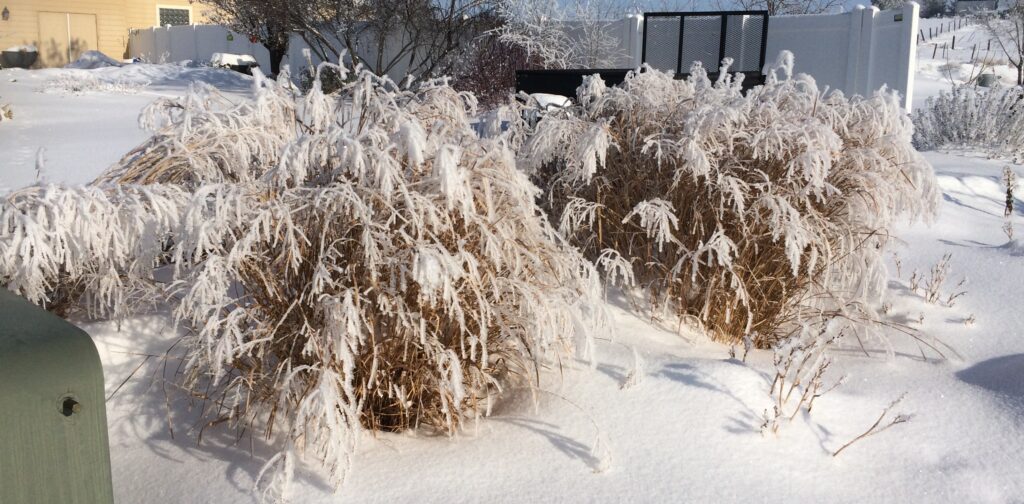
- Allows some plants to spread by allowing seeds to drop and germinate—Naturally this depends on your gardening style, but allowing plants to reseed themselves provides new plants for free and can replace parent plants that die out, such as with columbine and sweet alyssum.
If a messy yard is too much for your aesthetic, but you still want to do your part to help overwinter birds and insects, one alternative is to clean up the front yard, but leave less visible side or back yards with their spent top growth
Approaching seasonal cleanup with less military precision and more consideration may actually lead to a healthier garden and make seasonal cleanup less overwhelming. Leaving cleanup until spring helps you and it helps your garden ecosystem.
Avoid Being Overwhelmed: Consider Physical and Mental Health
If you’re the kind of person who enjoys completing the majority of garden cleanup in the fall, no problem. If you have help, or it’s a smaller garden, or you’re physically capable, and this approach works for you, then it’s worth doing it your way.
However, considering the volume of work to do and the standard to which some gardener’s aspire, performing 100% of garden and yard cleanup in one season may be detrimental to a gardener’s physical and mental health. It isn’t unusual for gardeners to be sick of gardening by the end of the growing season. If you get overwhelmed with the magnitude of work or you have a job that doesn’t allow the large chunks of free time necessary for bulk yard cleanup, perhaps consider a paced approach.
For example, a paced approach could look something like this:
- 20% fall—Clean up anything diseased (powdery mildew, fungus) or leaves that get slimy over the winter. Clear out the vegetable garden. Remove dead plants and prune any dead limbs from trees or shrubs.
- 20% slowly over the course of the winter—For instance, choose an amount of time, whether it’s 30 minutes a week or 15 minutes a day, and spend it cleaning up, prioritizing spring-blooming plants and leaving those that break dormancy later than others.
- 20% early spring—This is the time to prune fruit trees and grapes, as well as roses once they start budding out.
- 20% over the course of late spring—Prune trees as needed, and other late-budding plants such as hardy hibiscus and rose-of-sharon.
- 20% over the course of the summer—Prune summer blooming shrubs and perennials soon after they’re finished blooming, remove unwanted or diseased plants.

Knowing when trees, shrubs, and perennials need to be pruned—like in spring (such as smooth leaf hydrangea, butterfly bush, summer-blooming spirea), fall (such as arborvitae or trees like oak) , or post-bloom (such as lilac) helps you to pace pruning and cleanup times. Here’s a great resource with plant names, timing, and what to prune: https://piedmontmastergardeners.org/article/when-to-prune
Ultimately, how you schedule and pace garden cleanup is what works best for you.
The Right Tools Make Cleanup Easier
Pruning everything by hand when you have limitations of time, physical ability, or garden size restricts how much garden you can maintain, and this includes seasonal cleanup. When you have the right tools for your landscape it simplifies the cleanup process and makes it more efficient and productive. Some of the best tools for cleanup include:
- Hedge trimmer (battery or gas) – This tool saves so much time cutting grasses, shrubs, evergreens, daylilies, and other plants, exponentially reducing hand-pruning time. These come in a variety of sizes and price ranges, but are worth the time and effort they save you.
- Hand pruning shears – These range in quality and price points, but a quality pair will last many years and make a difference in productivity. A quality pair will also be less likely to cause hand pain and make cleaner cuts.
- Lopping shears – Loppers work the same as hand pruners, but with a long handle. They’re useful for pruning twigs and smaller branches up to 2 inches in diameter, depending on the lopper. The long handle gives more reach and provides better leverage when cutting thicker branches.
- Pruning hand saw / small chainsaw / sawsall – These tools are useful for branches or stems that are too thick for the lopping shears. They can be used primarily on trees, but also on larger shrubs such as lilacs.
- Leaf rake / bow rake – Useful for gathering lawn and garden debris.
- Garden bag / wagon / wheelbarrow / trug—This really depends on what you’re cleaning up and your working style, but having a container to move debris saves so much effort.
Over time you’ll discover which tools work best for your garden and cleanup methods.
Create a Healthy Garden Environment
Choosing to perform the majority of garden cleanup in the spring isn’t laziness—it’s beneficial timing for creating a healthy garden environment. Don’t see the fall and winter decline of your garden as rot and decay that requires a thorough cleaning. Instead of seeing it as an eyesore, see it as part of the process of a healthy ecosystem within your domain. And it may just save your sanity, as well.




